
HELLO AND WELCOME TO HONORS CORNER!!
Introduction: Why Node Order Matters
In Infinity Kingdom, your dragon isn't just a mythical beast—it's the tactical engine of your march. The Talent Tree is where this beast earns its claws. But many players ask: Is there a correct order to level dragon nodes? My answer is—yes, depending on your march's purpose and composition.
When building any dragon—especially the Earth, Fire, or Holy types—you want to unlock power strategically, not randomly. Whether you're aiming to boost your march's damage, sustain, or support, each node gives a % increase to specific stats. For Free-to-Play (F2P) players especially, resource management is key—a poorly built dragon is an expensive mistake.
In this guide, we'll explore:
- What dragon nodes are and how they work
- STP (Stat Talent Points) and their impact on an Immortal's attributes
- How to level nodes based on your march's synergy (attack, defence, or support focus)
- Case studies: F2P Earth Tank March vs. P2P Holy Support March
- A comparative analysis with visual aids, tables, and strategic takeaways
What Are Dragon Nodes & Why Do They Matter?
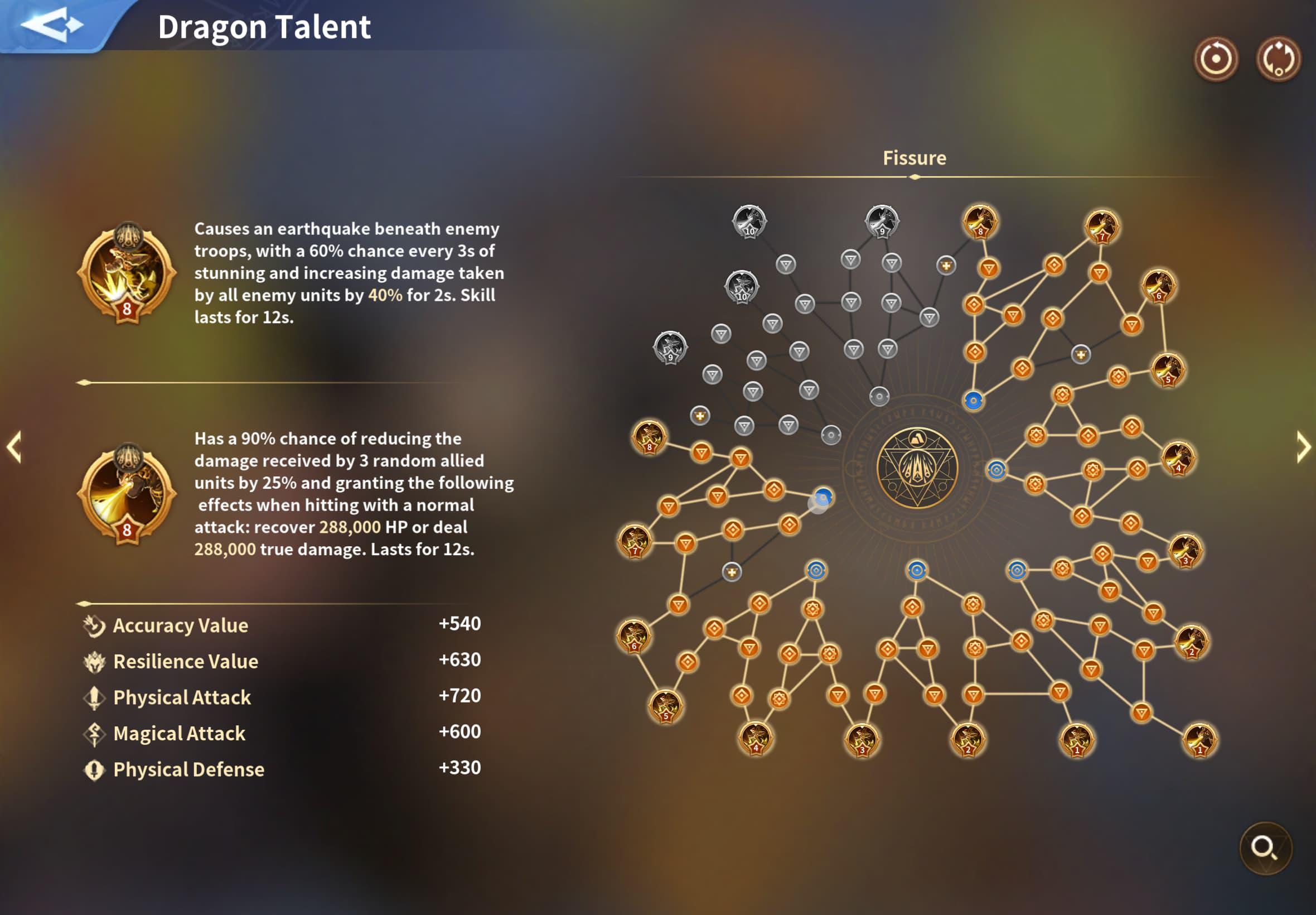
An example of Earth Dragon Talent Tree, focusing on defence, attack and resiliance. Still many nodes to finish, but having a clear focus on the direction of levelling up your nodes will be benefical.
Nodes on your dragon's talent tree provide stat boosts to your march's six core attributes:
- HP, Physical Attack, Magical Attack
- Physical Defense, Magical Defense, Speed
Each time you level a node, you invest Dragon Crystals, with small nodes going up to Level 3 and major nodes levelable five times. These nodes are categorised into three paths:
- Attack (Left) – Increases base damage, critical, penetration, and energy gain
- Defence (Right) – Boosts survivability: defence, HP, dodge, shield value
- Support (Center/Right) – Enhances healing, crowd control (CC), and utility
Tip: Your Immortals' role should define your dragon's path. Ask yourself:
- Are you trying to outlast (DEF)?
- Deliver a heavy burst (ATK)?
- Or control the battlefield (SUPPORT)?
STP Allocation by March Type

Here's a snapshot of how STP breaks down per march type
Mechanics and Purpose
Each node in the tree grants attribute bonuses, improves skill efficiency, or provides passive effects. You invest Dragon Soul Crystals and STP (Stat Talent Points) into nodes. The deeper you go in a tree, the more specific and powerful the bonuses become.
Higher-tier nodes typically
- Increasing skill affects rates
- Boost % damage or defence
- Add status effect resistance or enhance crowd control
- Give bonuses like energy regen or stat conversion (e.g., DEF to ATK)
Impact on Immortal Attributes
Dragon talents impact all six core Immortal attributes:
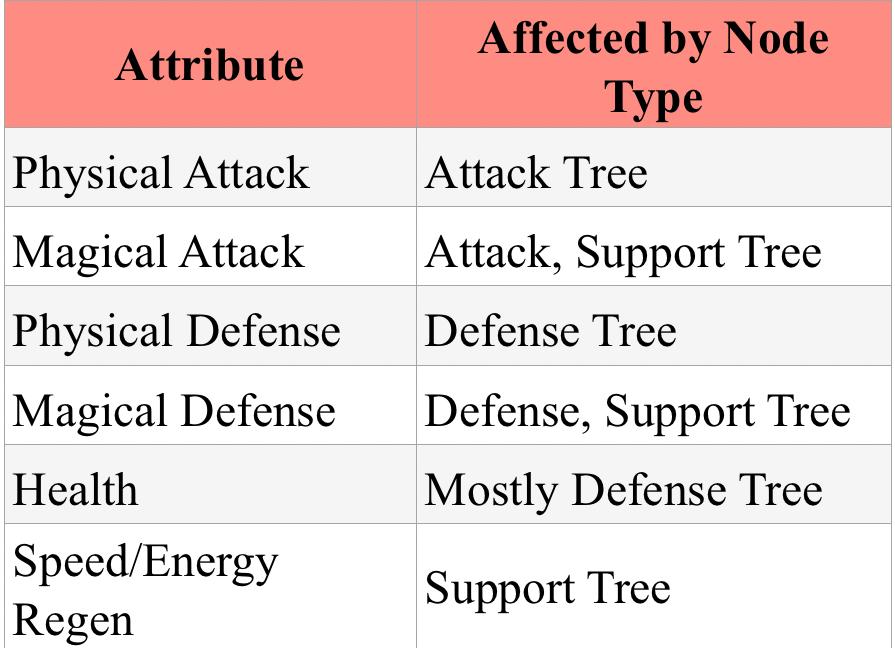
Example:
- Elemental Power (Earth) increases Earth damage and scales with Magical Attack.
- Resilience improves DEF and Health scaling, ideal for frontline tanks.
How Do You Prioritize Node Leveling?
You'll want to unlock each side of the tree up to Level 3 first, starting:
- Left Side if your build is damage-based
- Right Side if survivability is your priority
From there, begin filling nodes aligned to your Immortals' role. After hitting level 3 on both sides, push Level 8+ depending on your build:
- Double tank: max defence and HP first
- DPS heavy: max attack path early
- Support/magic control: go deeper into utility nodes
General Priority Rule
- Level mid-tier base nodes evenly to unlock pathways
- Prioritise branches that synergise with the majority of your march
- Avoid deep-specializing until you've tested your build in PvP/PvE

Here’s a focused breakdown of how the 6 primary Earth Dragon nodes—Claws, Gaze, Armor, Armor II, Physical Attack, and Robust—impact a Himiko, Zenobia, Alexander, and Charles march build. This is a durable, sustain-heavy hybrid, possible for F2P and adaptable PvP setups.
Impact of Earth Dragon’s Primary Nodes on a Himiko–Zenobia–Alexander–Charles Build
- Claws
- Boosts front-row physical damage, enhancing Alexander and Charles—your frontline tanks who rely on basic and ultimate physical attacks.
- Increases pressure and reduces the time your opponents have to recover.
- Impact: Helps maintain offence without compromising tank role.
- Gaze
- Increases energy recovery rate across your team.
- Enables Himiko and Zenobia (magic and healing casters) to cycle ultimates more often.
- Impact: Critical for sustained healing (Zenobia) and uptime on Himiko’s buffs and magic damage.
- Armor & Armor II
- These nodes raise physical and magical defenses team-wide.
- Excellent for Charles and Alexander who absorb frontline hits, and also keeps Zenobia and Himiko alive longer against AoE pressure.
- Impact: Maximizes the build’s core strength—durability.
- Physical Attack
- Amplifies damage output for Alexander and Charles, making the frontline more threatening, especially in prolonged battles where attrition matters.
- Impact: Turns tanks into hybrid threats without sacrificing their bulk.
- Robust
- Adds flat HP and resilience, reducing all types of incoming damage.
- Synergizes beautifully with Zenobia’s healing and Earth Dragon’s resilience, extending your sustain even further.
- Impact: Anchors your team’s ability to survive burst and outlast opponents.
Summary
These six primary nodes complement this defensive hybrid march by:
- Strengthening frontline pressure (Claws, Physical Attack)
- Improving energy cycling for support casters (Gaze)
- Enhancing team-wide resilience (Armor, Armor II, Robust)
This setup lets your team withstand and respond to both burst damage and control-heavy comps, keeping you viable in both PvP and PvE.
The focus would be to level up the primary nodes first in a sequence that benefits your march build. The fun doesn’t stop there, don’t forget those secondary nodes!!
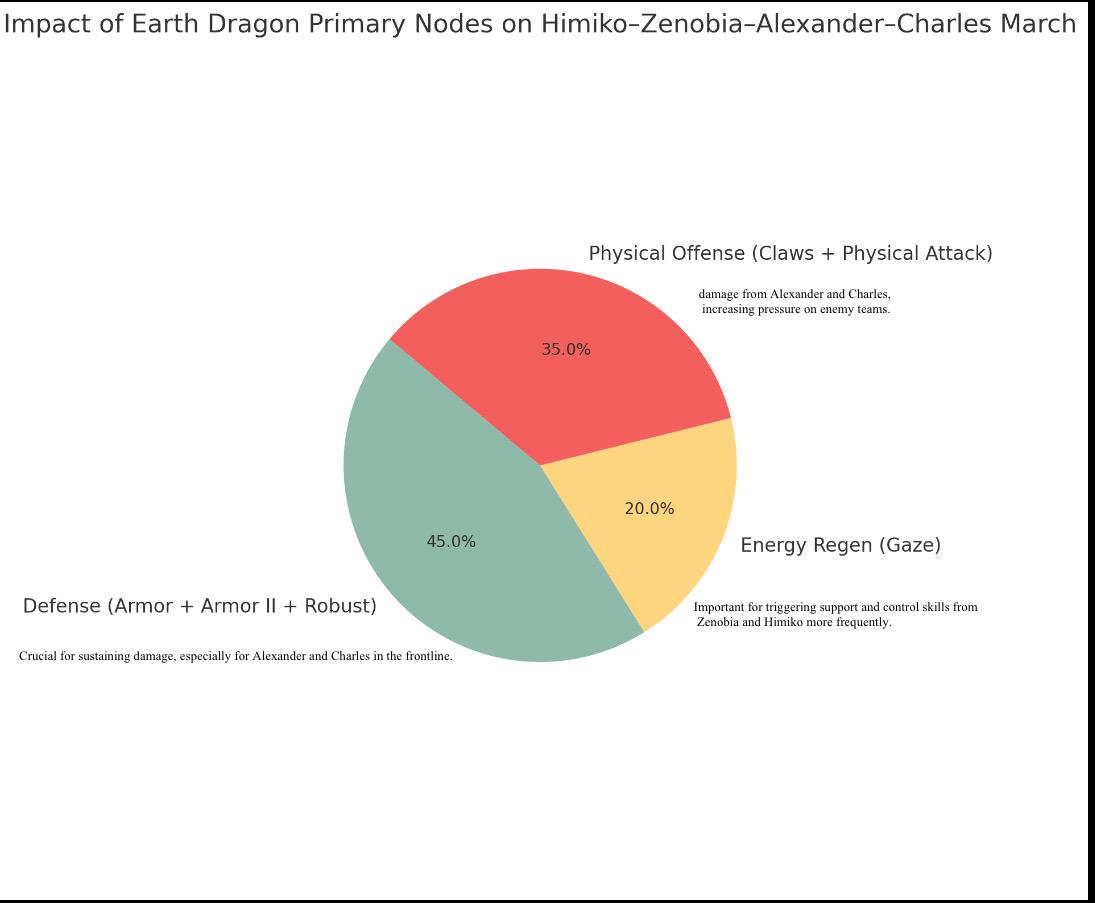
Example Builds: Node Strategy + EA + Specialization
1. Earth Dragon Build (F2P Defensive Hybrid)
- Immortals: Alexander, Zenobia, Qin Shi Huang, Hannibal
- Exclusive Artifacts (EAs): Sword of Vengeance, Staff of Command
- Specialisations:
- Alexander: Physical DMG + Sustain
- Zenobia: Support Defense + Energy Regen
- Node Focus:
- Prioritise Resilience, Durability, and Solidarity
- Then scale Earthforce (ATK + CC Resists)

Why this works: Great synergy for longer fights, excellent sustain, counters burst builds.
2. Holy Dragon (P2P Support/Magic Build)
- Immortals: Ninetails, Fu Fei, Apollo, Poseidon
- EAs: Holy Word, Eternal Hymn
- Specialisations:
- Fu Fei: Healing/Support Boost
- Apollo: Magic ATK + CC
- Node Focus:
- Begin with Sanctity and Tranquility (Support and Healing)
- Add Clarity for CC Immunity, then scale Power Surge

Here is the visual aid showing the percentage increases in attribute focus for a Holy Dragon P2P Support/Magic build.
Why this works: it offers top-tier CC, AoE healing, and is nearly unkillable with smart timing and aid boost.
How Do Nodes Impact Immortal Stats?
Let's say you're investing in "Piercing Flame" (node)from Fire Tree Talent Calamity
- Each level gives +2.1% Physical ATK
- This % scales based on base stats + EAs + specialisation talents
Here’s how it fits:
Talent Set: Calamity
- Focuses on debuffing enemies and supporting magic-heavy fire builds.
- Piercing Flame Node:
- Reduces the physical damage dealt by enemies afflicted with Burn, helping your fire team take less damage while your DoT (damage over time) burns them down.
Summary:
- Piercing Flame = Calamity Talent Tree
- Best for builds using Wu Zetian, Seondeok, Trajan or Wu + magic carry, where burn uptime and damage mitigation matter.
So if Wu Zetian has 3,000 Magic ATK pre-tree, and node scaling adds 15%, she's hitting at 3,450 baseline, not including skills.
Node types affect:
- Attack Nodes: Add DMG, Crit, Energy gain
- Defense Nodes: Increase HP, Def, Dodge
- Support Nodes: Boost healing, control, energy regen
What Happens If You Pick the Wrong Path?
- Wasted Dragon Crystals
- Weak synergy: e.g., buffing defence on a full glass cannon team
- Slower PvP/Boss performance
- Harder to adapt to meta-shifts
Tip: Pick nodes that boost your back row's damage or your frontline's survivability—whichever your march leans into.
Conclusion: Final Thoughts on Dragon Talent Tree Prioritization
Building a powerful march in Infinity Kingdom doesn't stop at choosing your Immortals—it hinges on mastering the Dragon Talent Tree. Whether running a F2P Earth hybrid, a PvE-focused Fire lineup, or a support-heavy Holy/Chaos composition, your dragon's node path can make or break your synergy.
Key Takeaway Points
- There is an order to upgrade nodes—but it must be based on your team's needs.
- Start with the left side (Attack) for damage builds, and the right side (Defense) for tanky or sustain builds.
- Then move to level 8+ based on your march's strengths.
- Know your march type before spending Dragon Crystals.
- These are limited and precious—especially for F2P players. Invest in nodes that directly benefit your core Immortals' function.
- Understand how each node boosts your Immortals' six core attributes.
- The % gains scale with gear, specialisation talents, and EAs—maximising performance when correctly aligned.
- Pick your Dragon Talent (e.g., Prairie Fire, Wildfire, Calamity) to match your Immortals.
- Fire builds benefit differently from each talent. For example: Prairie Fire enhances burn and crit DMG. It is best used with Immortals like Wu, Seondeok, and Trajan.
- Specialisation and EA synergy matters.
- Node bonuses should amplify what your specialisation and EAs are already doing—whether boosting crit rate, buff duration, or team healing.
- Compare before committing.
- Use tools like node planners or my STP pie charts to visualise what benefits your build most.
Battle Reports
Now it’s time to put theory into action. Let’s analyze two battle reports using the Earth-Himiko march build—one win, one loss. These reports directly relate to the Earth Dragon Talent Tree example provided. We’ll use them to highlight how the current node investment impacts performance and where upgrades are still needed.
The goal is to pinpoint which primary nodes (like Armor, Claws, and Gaze) should be prioritized first to quickly strengthen the march. Secondary nodes can be completed gradually as more Dragon Crystals are collected. Focusing on the most impactful nodes early allows for better performance while the rest of the tree evolves.
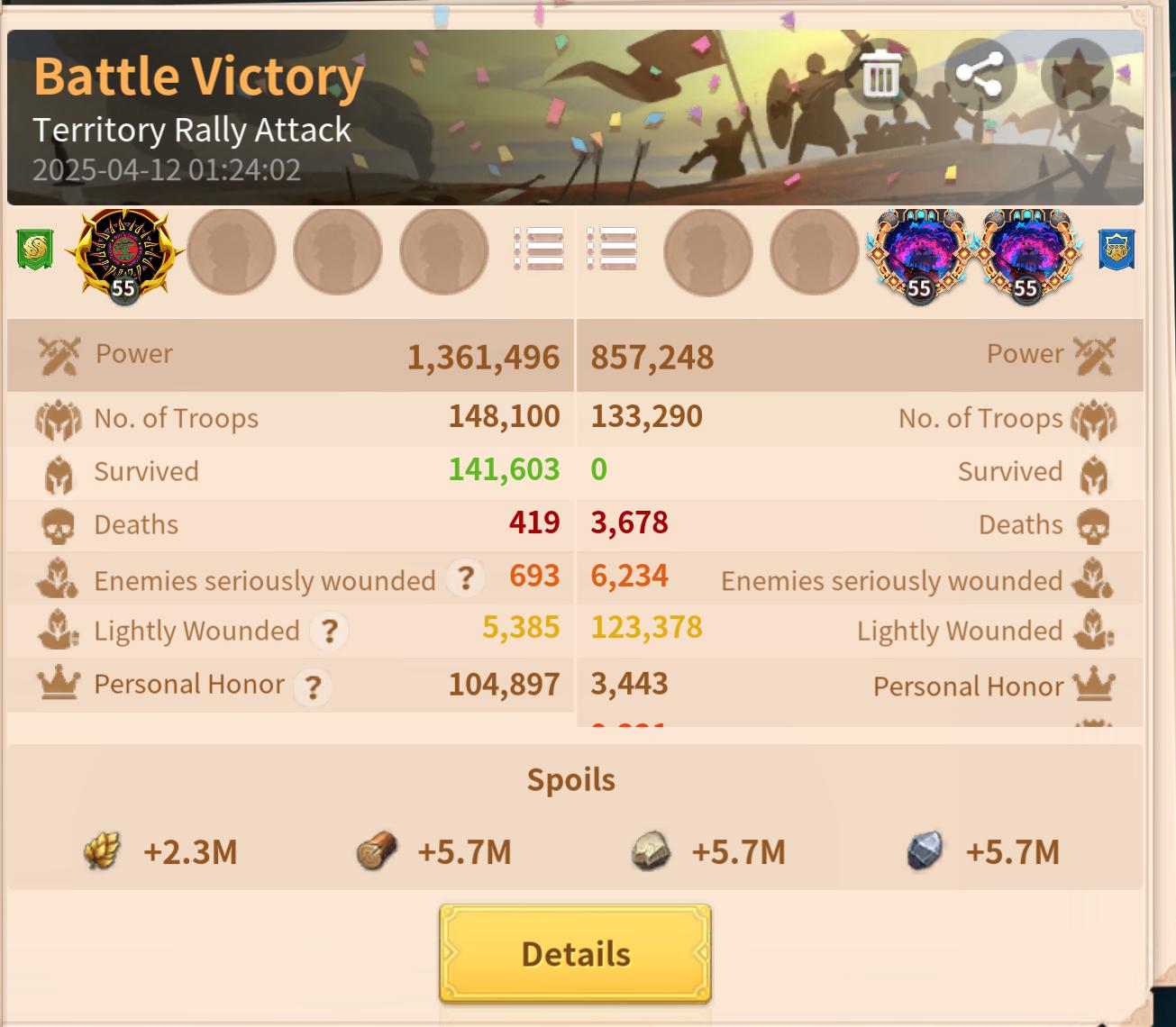
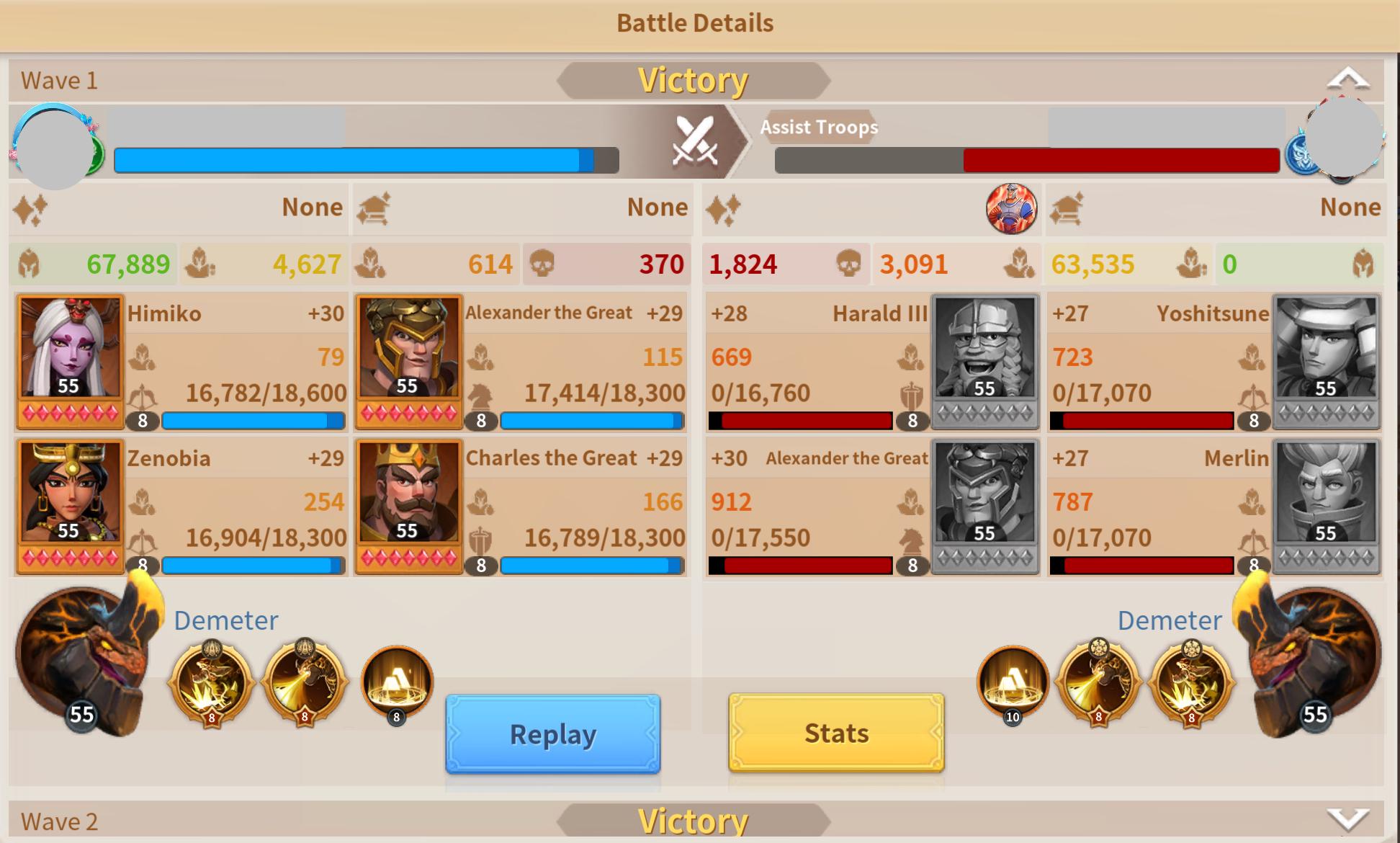


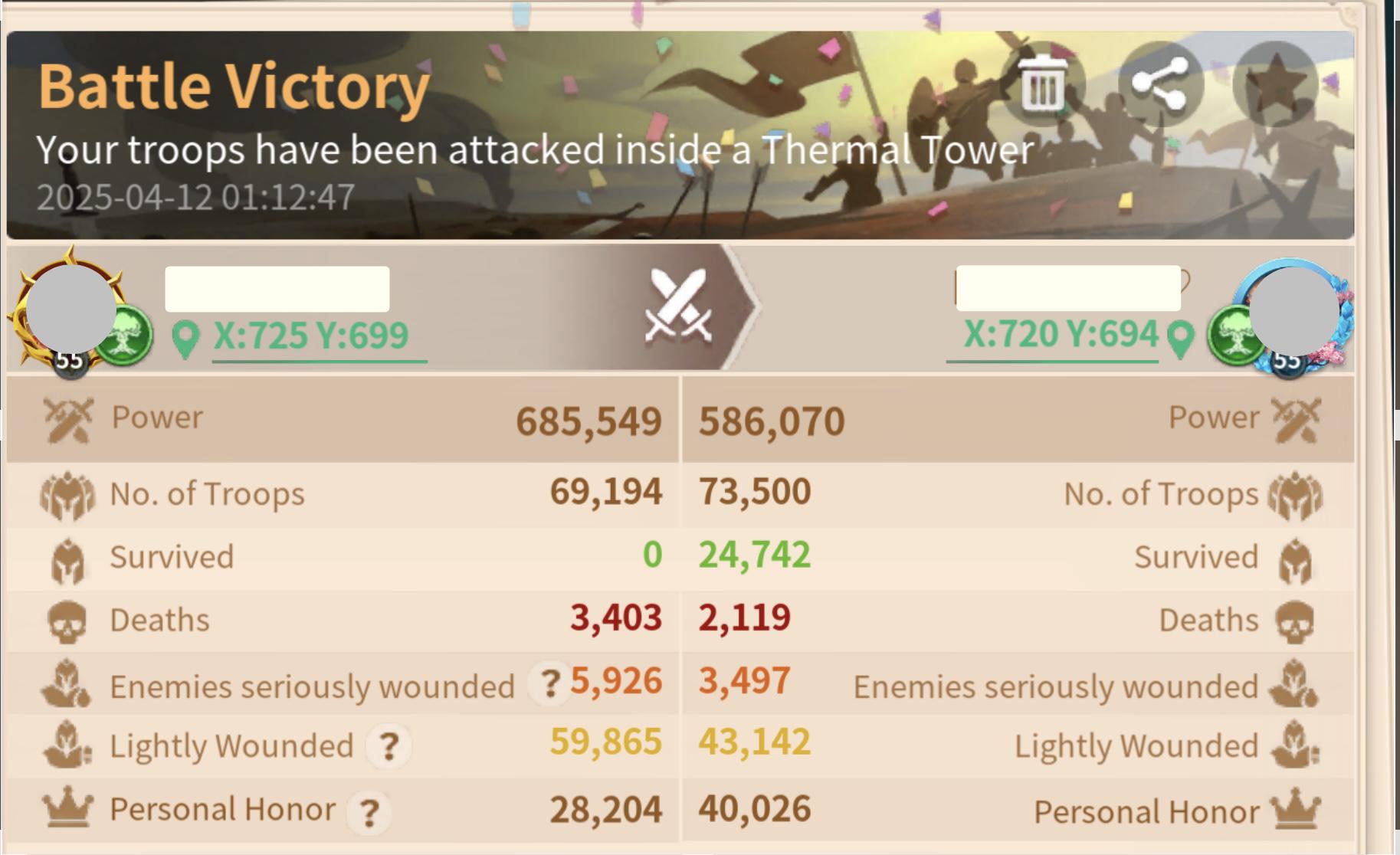
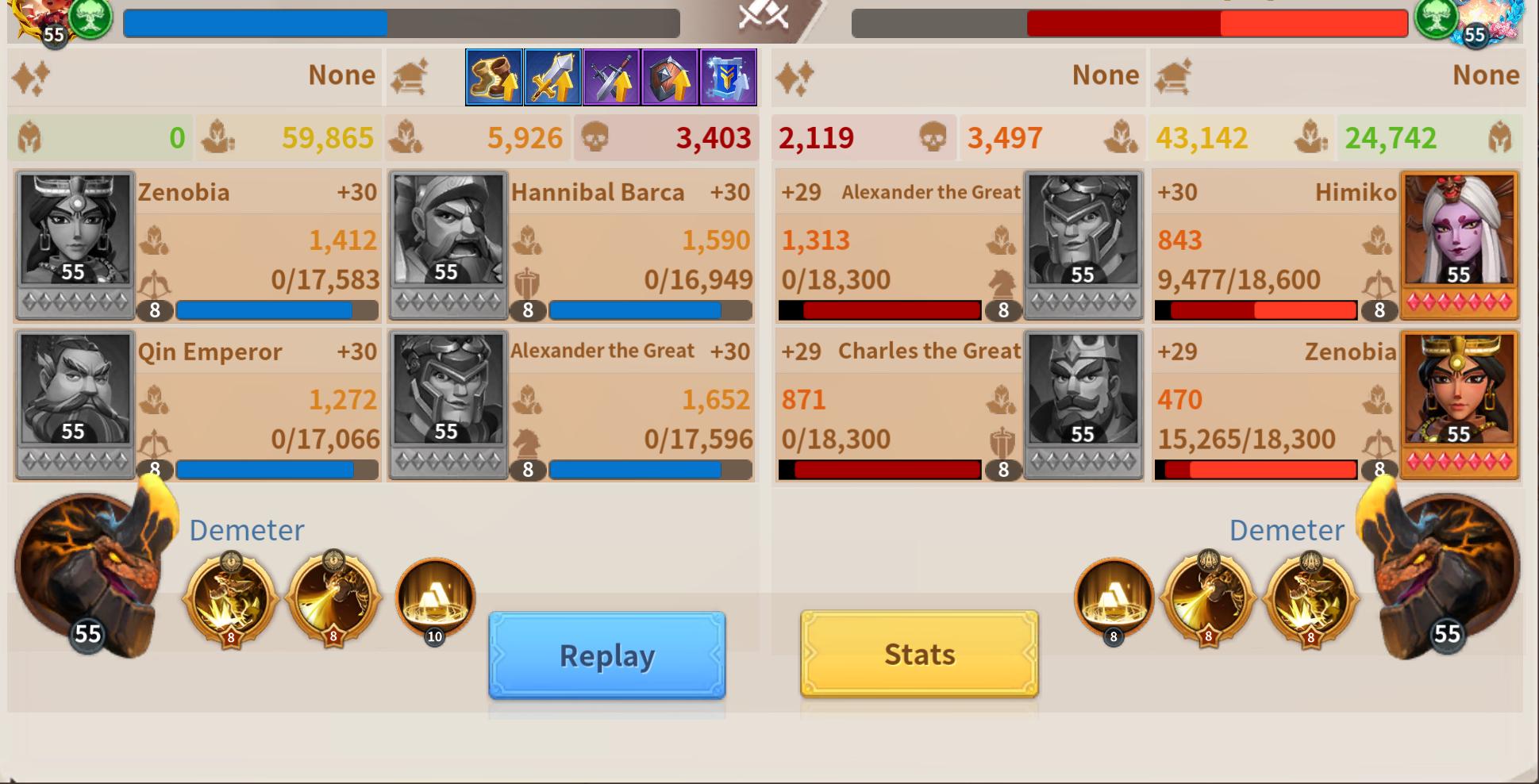

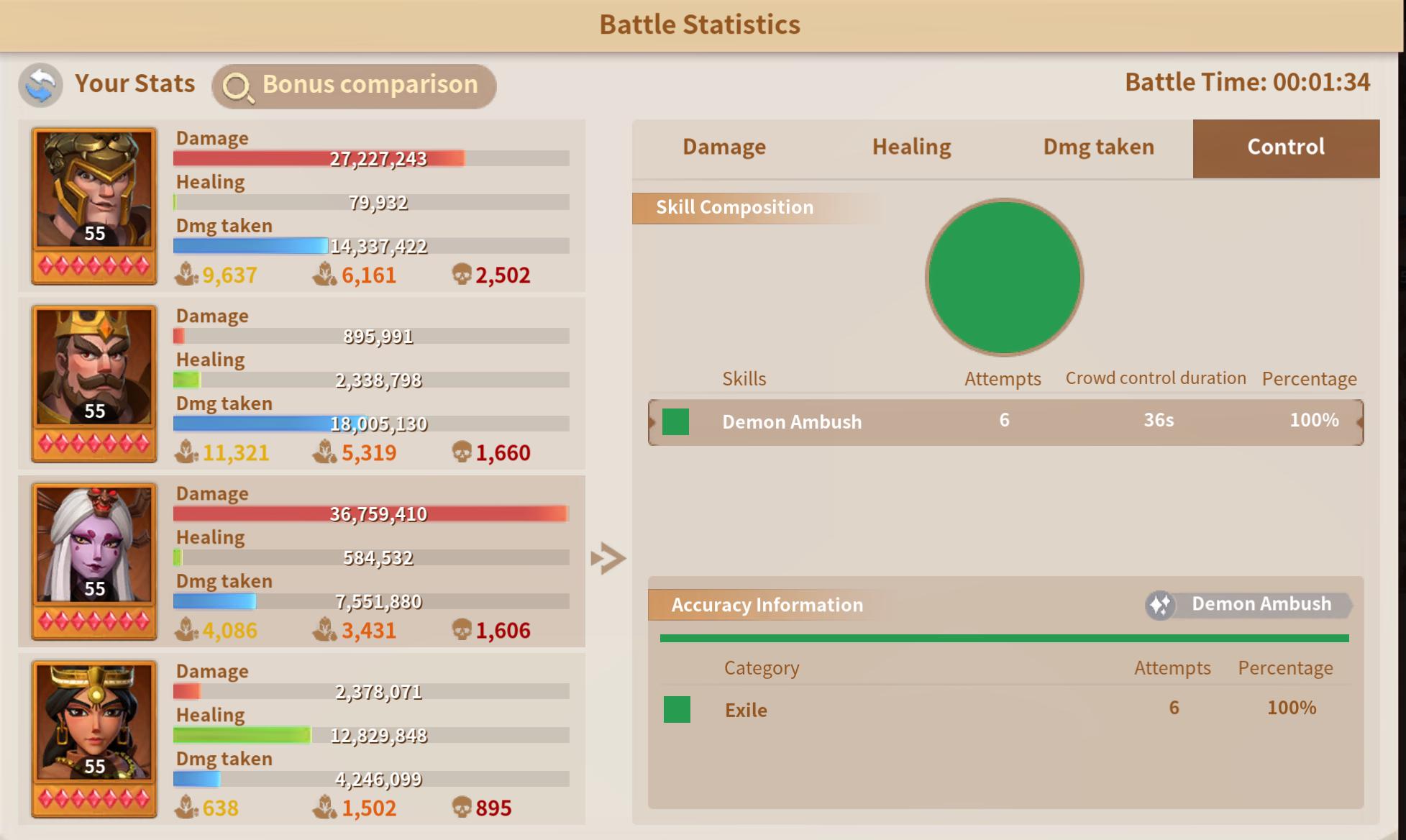
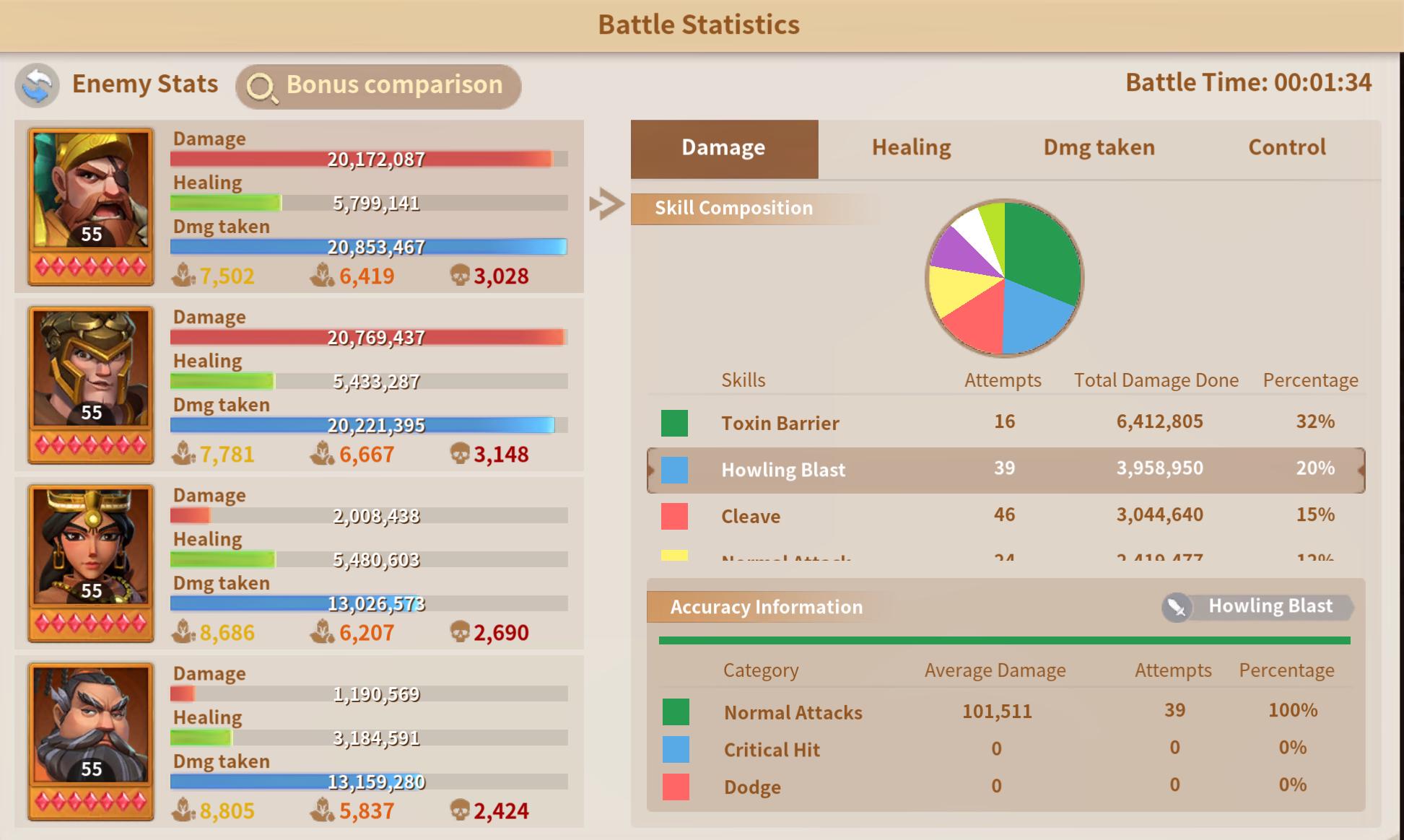



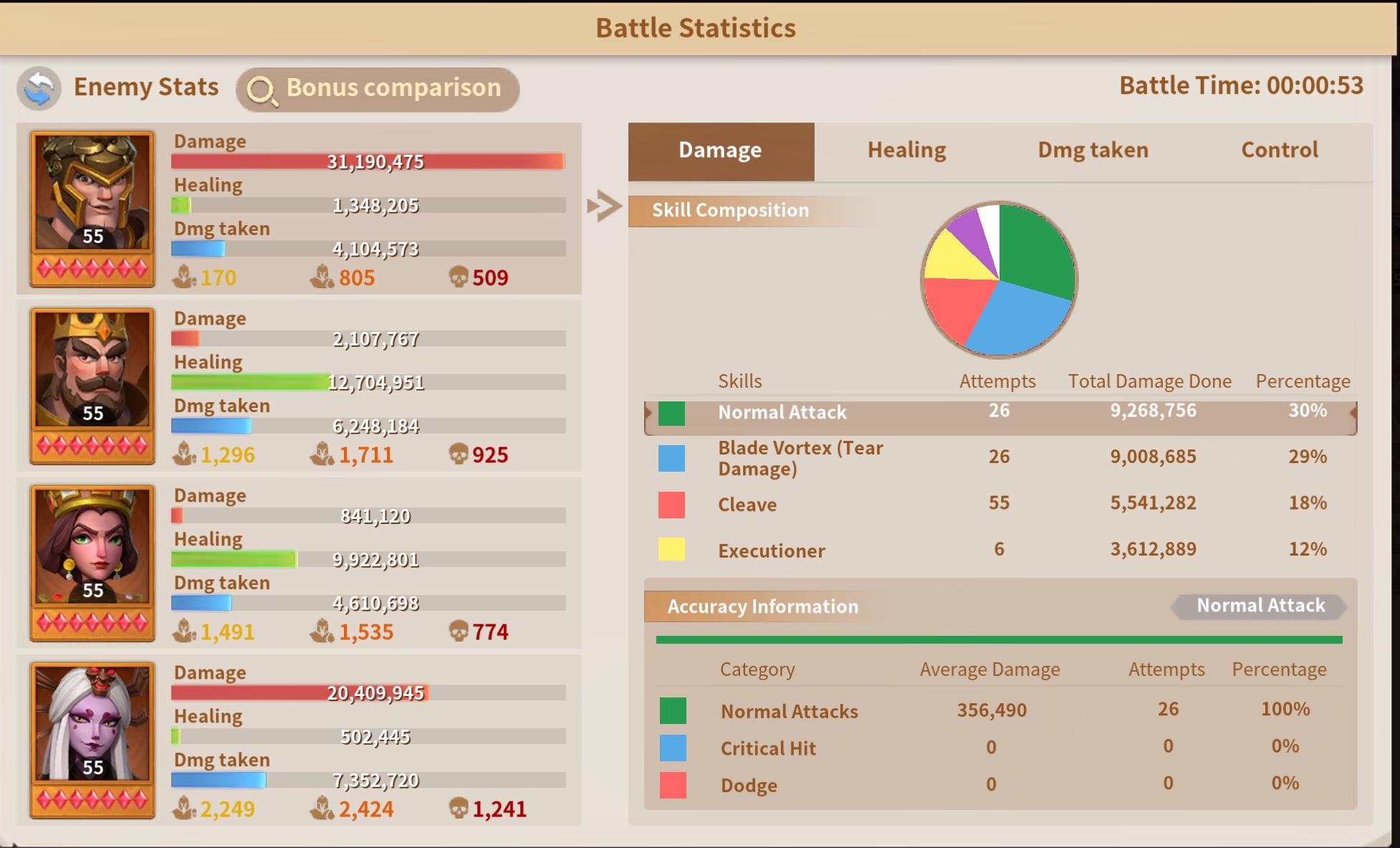
The Earth Himiko/Zenobia build couldn’t match the double damage output of the Himiko/Theodora setup. The battle report highlights key gaps—specifically, incomplete third skill, slower ultimate regen, and lower crit rate. Prioritize finishing primary Dragon Talent nodes: Defense, Attack, and Resilience. Once completed, these will boost Himiko/Zenobia march performance. Remember, battle outcomes also reflect STP, skills, EAs, and Specialization—use reports to guide targeted upgrades.
Final Advice
If you're unsure which way to go—are stop and review your march. Is it damage-heavy? Are you struggling to survive longer fights? Are you running a backline support comp? Let those questions guide your priority path.
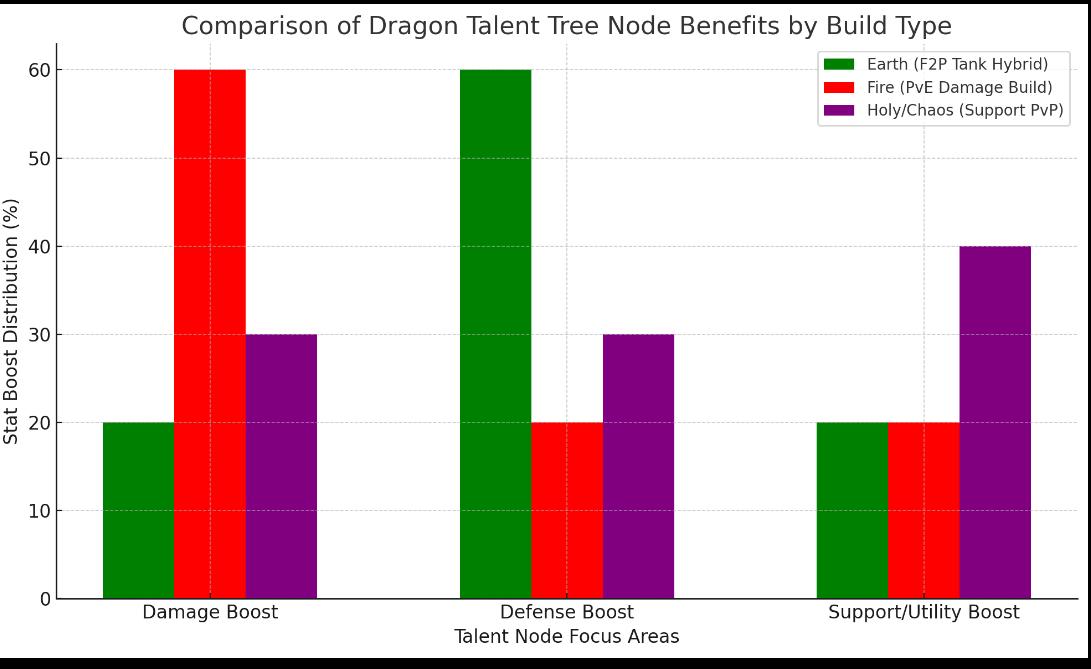
Here's a comparative bar chart showing the distribution of stat boost benefits from dragon talent tree nodes across three different build types:
- Earth (F2P Tank Hybrid) focuses heavily on defensive nodes, with balanced minor boosts to damage and support.
- Fire (PvE Damage Build) prioritises damage nodes to maximise burst and continuous output.
- Holy/Chaos (Support PvP Build) balances between support utility and both damage and defence to enhance sustain and crowd control.
Remember: the dragon is the heart of your march. Feed it well, train it smart, and it will carry you through Norheim's fiercest battles.
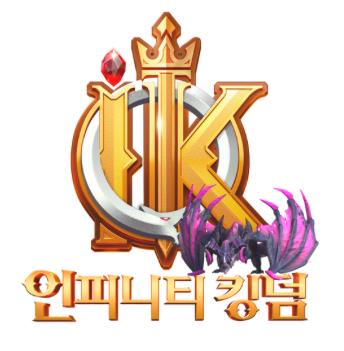
INFINITY KINGDOM DOWNLOAD LINKS





























![[Review] Analysis of PRD vs MIAU in Regular IB in Infinity Kingdom](https://oss.gtarcade.com/forum/gif/2025-04-27/439967_c9b43e68-efcb-4ac0-8487-64e7336f4f78_012557.gif?x-oss-process=image/resize,w_150,h_150)
![[Review] Player's Digest: Weekly Summary of Recent News and Events in Infinity Kingdom](https://oss.gtarcade.com/forum/gif/2025-04-27/439967_dcb09423-0936-45a4-b514-a9d98987fb81_160751.gif?x-oss-process=image/resize,w_150,h_150)
All comments (5)
Yet another excellent thorough post!
Top 
😁
👍
Fabulous article!